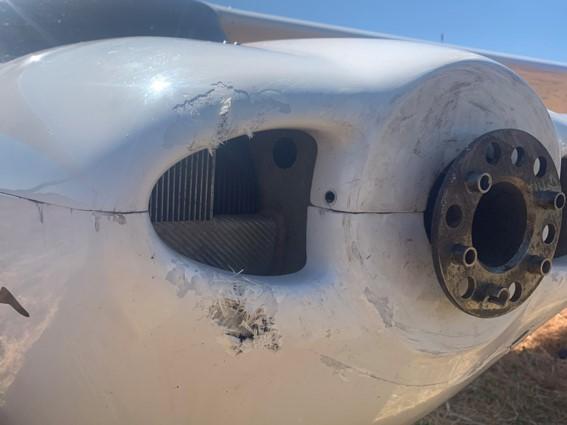
|
Key points
|
The propeller of a Jabiru aircraft separated in-flight due to fractured propeller bolts likely due to a loss of bolt tension, an ATSB investigation has found.
A student pilot had departed on a training area solo flight in the Jabiru J170-C aircraft from Muchea Greenside airfield, north of Perth, on 22 December 2021. On return to the airfield, during the downwind leg of the circuit, the pilot commenced configuring the aircraft for landing when a vibration from the engine was felt.
The engine gauges read as normal and the vibration reduced with throttle reduction.
Shortly after, while on final approach, the pilot observed emus crossing the runway around the normal touchdown point and conducted a go-around. While on climb at around 800 feet, there was a loud ‘bang’ and the pilot observed that the propeller had separated from the aircraft.
The pilot elected to land ahead and conducted an uneventful forced landing in a paddock, approximately 2.5 km from the end of the runway. The aircraft suffered minor damage during the landing, and the pilot was uninjured.
“The ATSB’s investigation found that the propeller separated as a result of fracture of the propeller bolts that was likely related to a loss of bolt tension,” said ATSB Director Transport Safety Dr Stuart Godley.
“However, as the propeller was not able to be found, the mechanism for the loss of bolt tension was not determined.”
The investigation also noted that the student pilot’s actions were positively influenced by having recently undertaken several hours’ worth of flight emergency training, contributing to the safe outcome.
“When faced with an in-flight emergency, emergency training practice and recurrence will increase the likelihood of pilots achieving a safe outcome,” Dr Godley said.
The incident also highlights the importance of pilots remaining vigilant to transient or persistent changes to the normal operation of their aircraft, which may be indicative of an impending failure of a critical component or system.
“Landing as soon as practicable and having the aircraft inspected is a prudent course of action.”
Dr Godley noted that the ATSB did not typically investigate incidents and accidents involving recreational category aircraft. However, as Australia is the state of design and state of manufacture for the Jabiru aircraft, and the same aircraft model are registered with CASA and is also operated internationally, the ATSB conducted the investigation to determine if there were broader lessons for the aircraft type.
Read the report: In-flight propeller loss involving Jabiru J170, 24-7496 Muchea/Greenside ALA, Western Australia, on 22 December 2021


